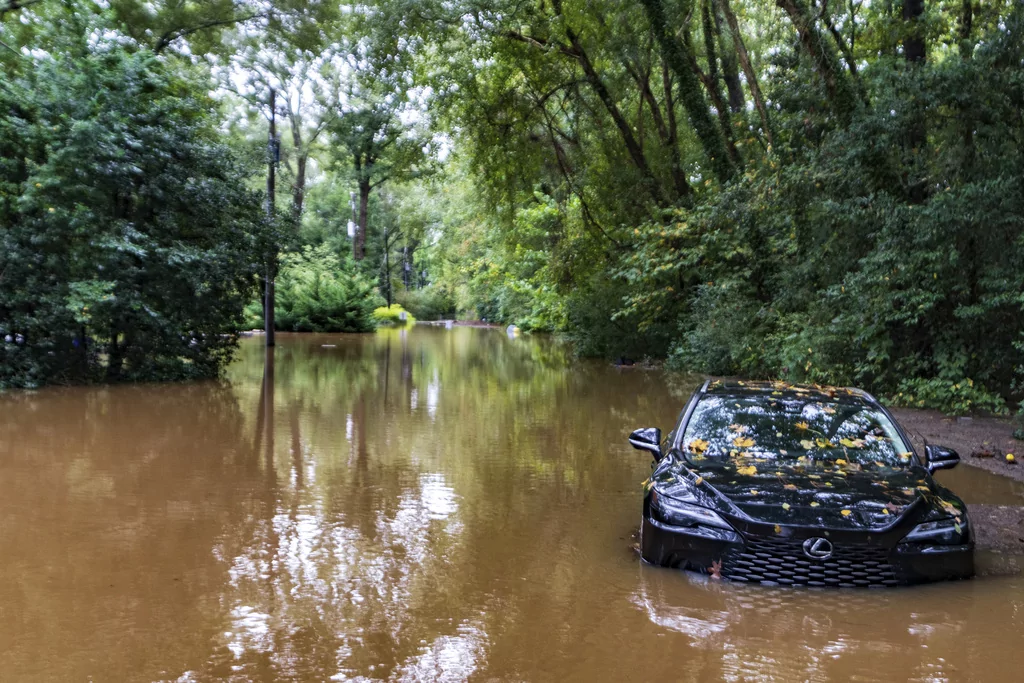

(The Center Square) – About a week or so after Election Day every year, the aroma in the cool air begins to change downtown in the 1,300-population community of West Jefferson in the North Carolina mountains.
Frasir firs by the truck and trailer load, most open-air, are hauled into central distribution sites to be loaded onto 18-wheelers and taken throughout the country. If 27,000-population Ashe County were a state, it would rank No. 2 in the nation for Christmas tree production.
There’s really nothing quite like it in a town at 3,000 feet above sea level that draws tourists with a love of arts and cheeses. Amid the catastrophic devastation of Hurricane Helene, there is some good news coming from the High Country.
“We do not expect the aftermath of Hurricane Helene to have a significant effect on the supply of real North Carolina Fraser fir Christmas trees this holiday season,” Jennifer Greene, executive director of the North Carolina Christmas Trees Association, told The Center Square. “Christmas tree farmers are resilient, and they possess the grit and determination to overcome the most challenging circumstances.”
Even considering eastern North Carolina hurricanes such as the 500-year flooding from Floyd in 1999 and Hazel in 1954, the lone Category 4 to ever hit the coast, Helene is arguably going to be the state’s worst disaster. At least 88 are believed dead in the state and 230 in six southeastern states; possibly 100 or more remain missing as search and recovery enters a gruesome third week in the Appalachians; and water, power and soon heated homes are challenges.
“It is still too soon to connect with farmers in the hardest hit areas of the western region,” Carrie McClain, CEO of Hart-T-Tree Farms in Ashe County, told The Center Square. “The infrastructure is devastated.
“Driving around and talking to some, it does not look like Christmas trees were damaged. There was some flooding in fields and a few growers have reported damage to seedlings and nurseries. The biggest concern for some growers will be road access – “Can I get the trees out of the field.” But I think the majority will be able to get their trees out.”
At 2 p.m. Thursday, DriveNC.org reported 628 road closures statewide from Helene. The breakdown is three interstates, 46 federal highways, 54 state roads and 525 secondary roads. The number is climbing, up six in 48 hours, as search and rescue moves to the cusp of a third week.
“At this point, we are still gathering information from our farmers regarding the extent that their farms were impacted by the storm,” Greene said. “The next step will be working together to create a plan for harvest and shipping as we prioritize the safety and welfare of our farmers, their families, and their workers.”
Though the road is long and the next month likely to be short, Greene said support from neighbors, friends, volunteers from various areas and states has been tremendous. Included are the North Carolina Department of Agriculture & Consumer Services, local N.C. State University Cooperative Extension Centers, elected officials, and partner organizations, she said.
“We have a long way to go, but we have every confidence that in November, we will welcome our faithful friends to our local choose and cut farms and our wholesale Christmas trees will be on their way down the mountain, ready to help families celebrate the merriest season of all,” Greene said. “Many have asked how they can support Christmas tree farmers in western North Carolina. Be sure to buy a real Christmas tree, preferably a North Carolina Fraser fir, but any real tree helps support what we dedicate our lives to do.”
McClain, in the county that borders both Virginia and Tennessee, said the hardest hit regions are Avery County and south as well as the western edges of Watauga and Ashe.
Avery is another big production county.
North Carolina is No. 2 nationally in Christmas tree production behind Oregon. An estimate could not be obtained from the Agriculture Department on how much it contributes to the state’s $111.1 billion agriculture and agribusiness industry – the state’s No. 1 – but recent reports indicate it is likely between one-quarter and one-half billion dollars.
“I don’t think the consumers will notice anything different,” McClain said. “But consumers can help western North Carolina farmers by buying a real tree this season. Tell your friends and family near and far that purchasing a real Christmas tree this holiday season – wherever it comes from – helps western North Carolina farmers.
“Our biggest competitor is artificial trees – and they have an unfair advantage since they go into the stores long before real trees do. The purchase of a real tree, whether from North Carolina or not, keeps our industry strong.”





